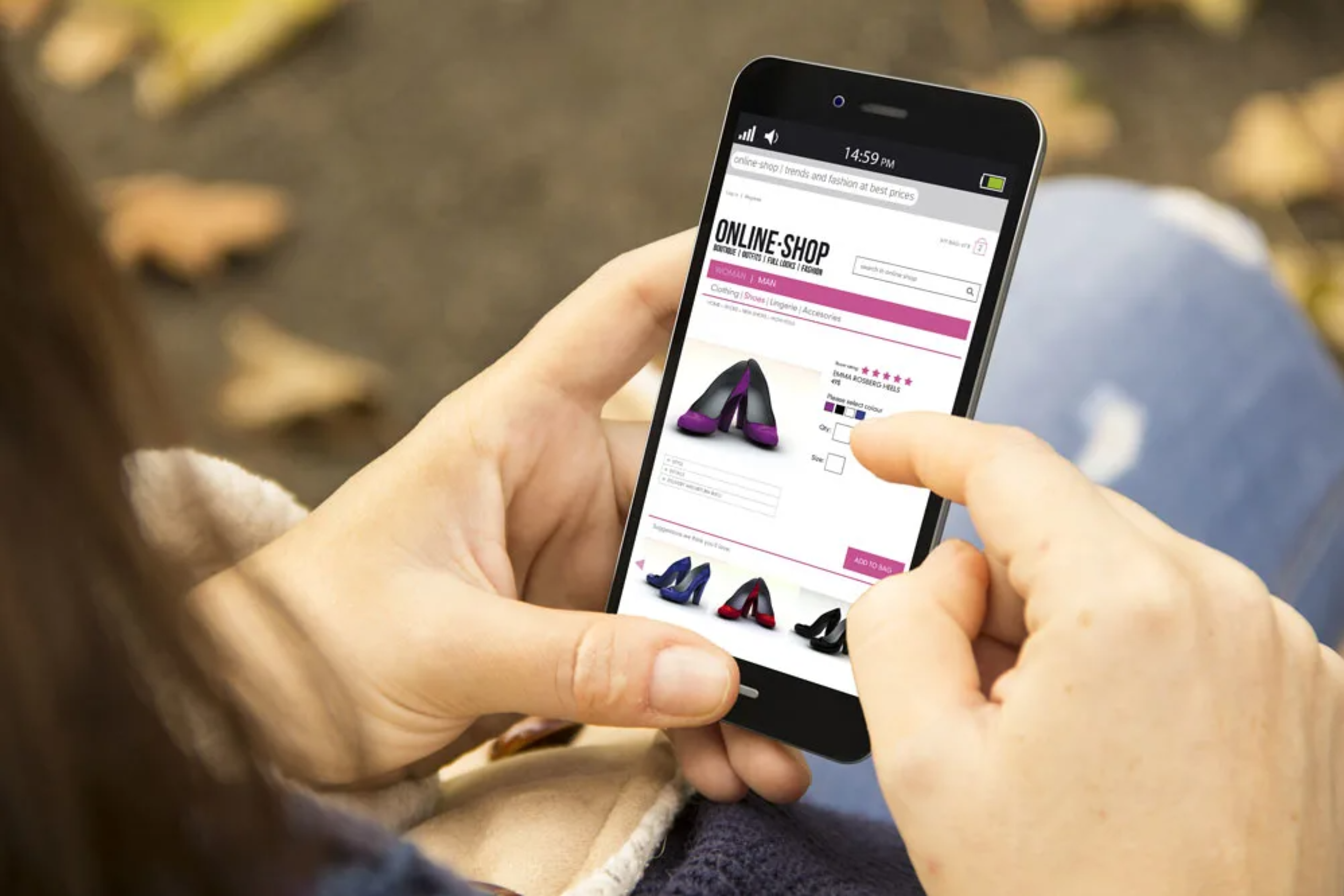6 Steps to Hire a Local Web Designer

Effective web designers create eye-pleasing websites that help clients address business goals. But how do you identify local web designers and agencies with the right skills and experience for your project – and how will you know which one to hire? Let’s explore the essentials of tapping into your local talent pool for the right web designer. By following the steps in our guide, you’ll be able to select a designer with confidence. You’ll also be one step closer to having a beautiful website for your business.
Begin Your Search Online
The web is the best place to locate capable web designers and agencies. To create an initial list of local practitioners, simply navigate to your favorite search engine and enter terms like “web designer in [your area]” or “[your city] web design.” Using the name of your city in your search will help identify professionals who are interested in building local relationships. The results pages will provide an extensive list of nearby web designers and design teams, any of whom could end up being the best fit.

Speaking of teams, a “designer” isn’t always a freelancer who handles every aspect of your design effort without assistance. Many local web designers are actually small cohorts (design “shops” or small agencies) of professionals, all of whom specialize in one aspect of the design process. Some may practice independently but collaborate with others – web developers, copywriters, and strategists – depending on the scope of the project. Sometimes a designer will handle everything on his or her own, but collaboration among teams is common in the industry
Look for Appropriate Skill Sets
Today’s web designers aren’t just Photoshop prodigies; they’re well-rounded creative minds who understand graphic design, web technologies, and internet marketing. To confirm whether designers’ skill sets align with contemporary standards, pay close attention to the service descriptions and biographical information on their websites. At a minimum, designers should be proficient in all of the following:
Mobile-first design
In this day and age, if you want to attract and retain customers, your website needs to be optimized for smartphones and tablets. An emphasis on mobile-first design means all your website's visual and interactive elements are functional on any device.

Not all designers will include the specific terminology “mobile-first design” on their websites, but look out for buzzwords like “mobile responsive,” “mobile friendly,” and “mobile experience.” For most business websites, a mobile-first approach will result in a responsive website that automatically resizes to fit any screen, so any of these word combinations is a positive sign.
Content management systems
A content management system (CMS) is a software you use to update a website after a design goes live. You want to hire a designer who works with at least one CMS platform so you can have control over your website after its launch. Otherwise, you might have to call the designer every time you want to make a change! Modern CMS software makes it easy to add, modify, and remove content from your website. Look for designers whose service descriptions mention any of these three CMS platforms:
WordPress: Arguably the easiest CMS for non-techies to use, WordPress is a common go-to solution for small businesses. Given the immense popularity of the platform,1 many designers flaunt their WordPress savvy and might even call themselves “WordPress designers.” For most small businesses, connecting with a designer who knows WordPress is a smart move.

Drupal: Drupal is popular among large organizations with complex design needs (think financial institutions and government agencies).2 The software also accommodates the relatively simple layouts and designs of most small business websites.

Joomla: Like WordPress, Joomla is known for its intuitive interface and simple self-management tools for small businesses. Many designers work with both Joomla and WordPress and might choose one or the other depending on your needs.

Ultimately, it doesn’t matter which CMS your designer uses. Each is free, user-friendly, and will grow with you as your business and web design needs evolve.
HTML and CSS
Web designers don’t need to be computer programmers, but they should at least be proficient in HTML and CSS.3 These two languages are the basic building blocks of websites and enable designers to publish their creations online. Fundamentally, knowing how to write in these languages distinguishes web designers from other graphic designers. It’s a must-have skill for web designers.

While a designer’s website might not specifically highlight “proficiency in HTML and CSS,” verify that they are working with a CMS. If so, then it stands to reason they're using these languages on a daily basis. Also look out for design teams with a developer on staff. Many small design shops consist of a designer and developer working together. The designer doesn’t have to know HTML or CSS because the developer specializes in both – it’s a winning combo!
Search Engine Optimization
Even if a large search engine optimization (SEO) campaign isn’t on your radar, you should still hire a web designer who abides by SEO best practices. Designers play a major role in making your website visible to search engines.4 For example, a designer who optimizes your logo’s .jpg image and places all CSS within a single stylesheet can increase load times for every page – and a faster website can improve your ability to rank in search. Except when mentioned on their websites, designers’ SEO mastery can be difficult to gauge. Designing with a CMS is a good sign – a modern CMS will incorporate many SEO practices automatically – but make a note to ask the designers you contact to describe their approach to SEO. If a design team can confidently speak about SEO, you’re probably in good hands. But if a designer has no familiarity with SEO, you may want to consider an alternative.
Adobe Creative Suite
Here’s where graphic and web design overlap. The Adobe Creative Suite, in particular, Photoshop, Illustrator, and InDesign, are the tools web designers use to create original designs that fit your brand. Designers shouldn’t just be proficient with Adobe tools. They should be experts! Since a designer’s website might not mention the tools he or she uses to create original work, don’t be afraid to ask. If a designer uses something other than Adobe Suite, ask why they prefer the alternative and be sure you’re confident in their response. Verifying whether a designer has the skills described above is a way to ensure you end up with the perfect website. However, possessing a skill set is only part of the hiring process. The next step is much more subjective.
Compare Portfolios
Now that you’ve eliminated any designers who lack the required technical skill, it’s time to evaluate work samples. When evaluating design portfolios, keep in mind that some designs simply won’t fit your taste. Web designers create websites that reflect clients’ brands and help businesses attract new customers. Some designers’ past clients might not interest you, but that shouldn’t rule out the designer. Look for diverse work samples, as this will distinguish the most talented and versatile designers. What matters is that the designer acted on the client’s requests and the results are effective. To assess the effectiveness of a web designer’s portfolio, pay close attention to the following elements:
The look: Is the design visually appealing? Does it align with the client’s brand and voice? Instead of worrying about colors, consider whether the designer effectively communicated the goals of the business.
Usability: Don’t stop at the screenshots in a designer’s portfolio – visit the actual sites and explore! See if the websites load quickly, look good on your screen, and are easy to navigate. Do this on your desktop computer and your mobile devices.
Business potential: Ask yourself whether these websites exist to look pretty or to drive business. Does the design lead your eye to every call to action (CTA)? Can you determine how these websites help generate new business? After viewing each website, search for it in Google to see whether it appears in the search results.
Functionality: Find sites in the portfolio that have similar functionality to your site’s needs. For example, if you sell products on your website, verify that the designer has experience building e-commerce pages. The same goes for simpler functionality. Say you need a contact form with drop-downs and checkboxes. Try to find examples where designers have created these features.
Portfolios also help gauge a designer’s experience in the local market. Those with lots of local clients probably understand the business climate and might have a good sense of regional tastes and culture. Such traits could help public-facing businesses, like restaurants and retailers, that serve limited audiences in specific communities.
Contact the Designers' Past Clients
Viewing portfolios is an easy way to build a list of references. Before hiring a web designer, find out what it’s like to work with them through a frank conversation with past clients. Pick a few sites from each designer’s portfolio (preferably websites similar to what you want), and contact the businesses that hired the designer. Try to ask about each of the following:
Service: What was it like to work with the designer? Have the client describe the designer’s business style, creative insights, and responsiveness to requests.
Process: Did the designer come to the client’s place of business for meetings or vice versa? One of the advantages of hiring locally is personalized, face-to-face service, so be sure the designer is able to meet with you over the life of the project.
Timing: Does the designer keep deadlines? Did the client launch on the anticipated date?
Pricing: Assuming a similar scope of work, is the cost in your budget?
Results: How does the website perform? Can the client attribute an uptick in leads or sales directly to the new website?

If the client wasn’t happy about some aspect of the experience, be aware that a designer might not be at fault for every negative experience. Try to gauge whether the problem lies with the web designer or the client. Sometimes, clients bombard designers with last-minute requests or try to change the project scope right before launch, or make impossible demands that don’t reflect the designer’s skill.
Meet With the Designers Who Impress You Most
Once you’ve narrowed down your list to a few talented professionals with beautiful design portfolios and many satisfied local clients – you’re ready to reach out! Schedule a call or a face-to-face meeting with each “finalist.” If the designer functions as a team, be sure you’re meeting with the person who will be your primary point of contact. Try to limit these meetings to no more than three designers. Your goal is to get a feel for each designer’s approach and get an estimate of how long the project will take. Ask whether the designer works with other contractors, like copywriters and strategists, and whether you need to communicate with those people or just with the designer or project manager. Above all, decide whether you’re comfortable entrusting your website – possibly your most powerful marketing tool – to this person. If yes, ask the designer for a detailed statement of work based on your initial conversation.
Scrutinize Proposals and Ask Lots of Questions
Be sure each proposal covers:
Design tasks: What, specifically, will the designer do? Be sure the proposal includes a description of every design-related task, large and small.
Additional tasks: Here’s where development and marketing come into play. The proposal should include notes about implementation, including all coding, CMS, and content tasks. There should also be notes about who will create new content and what steps the designer will take to let content needs dictate page layouts and structure.5 SEO-related tasks should also appear in the proposal.
Process: Be sure the designer includes notes about the frequency of progress, where they will occur, and what they will cover.
Timeline: Not only should the proposal include a launch date, but the designer should provide a realistic timeline for the delivery of specific milestones.
Pricing and payments: Whether the designer charges per hour or per task, the proposal should display pricing for all services and specify when payment is due. Typically, web designers will request 50% of the total fee at the outset of the project and the remainder upon completion. Larger undertakings – for example, those requiring custom design for several different page types or e-commerce page templates – might require multiple payments over a period of several months.
Terms and conditions: Most designers have terms and conditions that protect them from lawsuits and require you to pay the full project fee before you become the legal owner of the design. This is normal, but do read through the terms and take notes about anything you don’t understand.
Remember, a proposal doesn’t become a binding contract until you sign. Ask questions about anything unclear and request modifications as needed. Seasoned web designers are used to discussing proposals with clients, and you should be 100% clear about the scope of the project before making any agreements or payments.
Conclusion
Now that we've covered the steps to finding, comparing, and interviewing potential candidates, all that’s left is to consult with your team and select the most compelling proposal. If you’re undecided between two or more designers, revisit the candidates’ portfolios and decide whose work is visually appealing and easiest to use. It might not be scientific, but it can be the best way to arrive at a decision. If you’ve followed this guide, you’re going to work with a fantastic designer or team no matter who you choose. It’s a good problem to have!
Team Expertise.comAuthor
Here to help you connect with the best local professionals. For questions or inquiries, please contact us at support@expertise.com!

